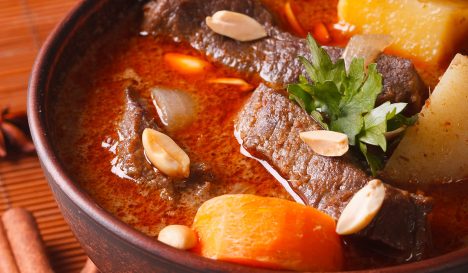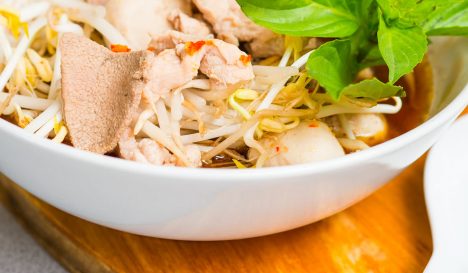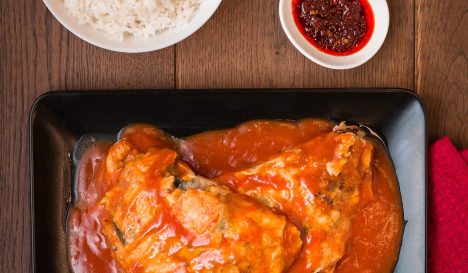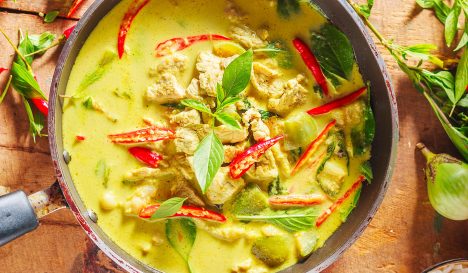Kaeng panang
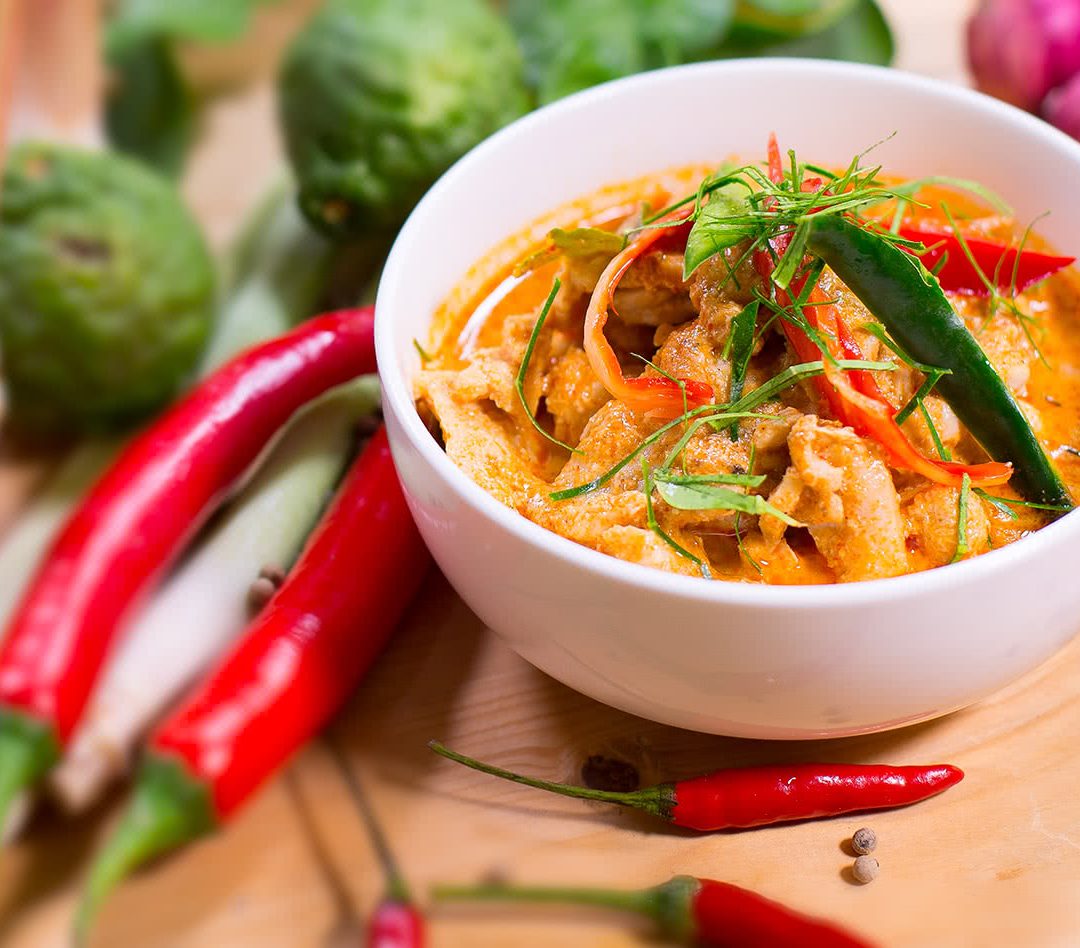
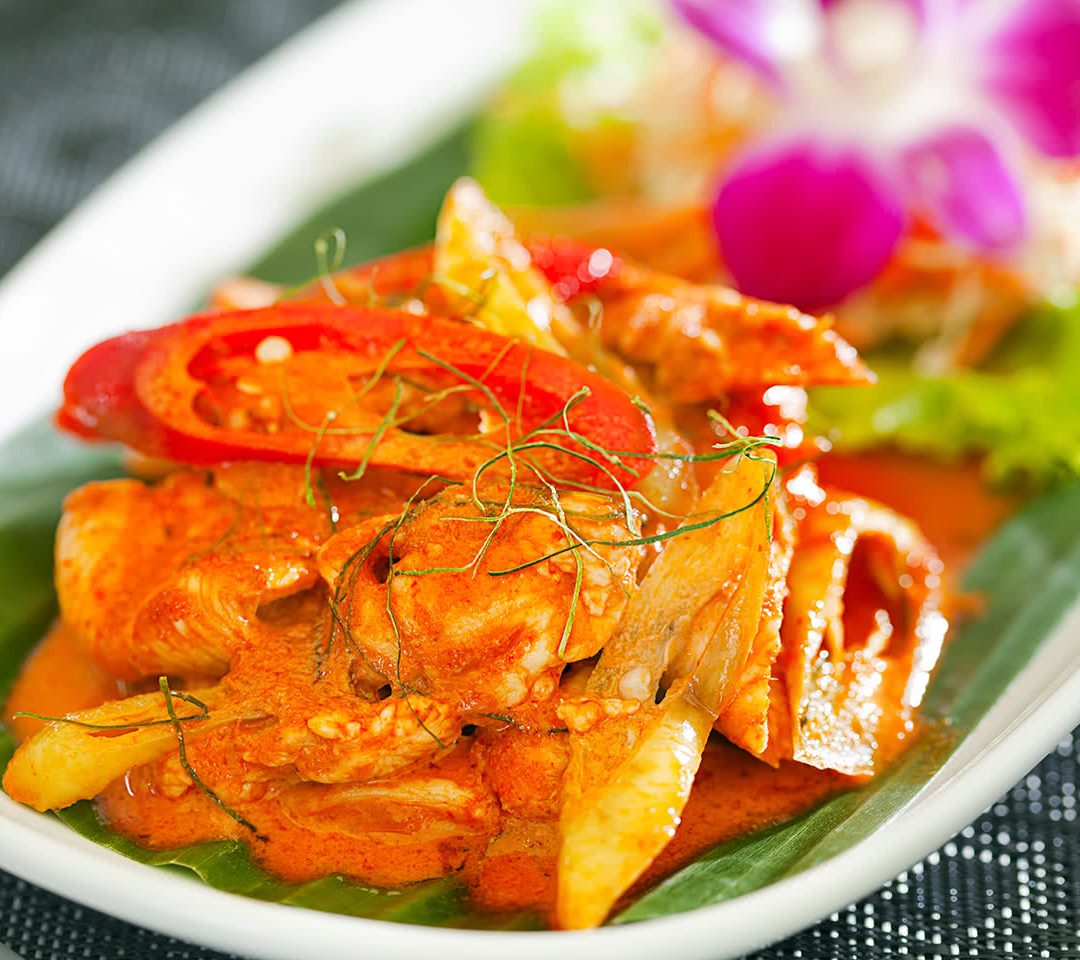
Kaeng panang
-
Kitchen Thai cuisine
-
Basis Meat / fish
-
Dish type Main course
-
For who Meat lovers
What is kaeng panang?
Kaeng panang (pronounced: ‘gkeng pah-neh-ien’) is the milder, sweeter and creamier sibling of the Thai red curry. Juicy pieces of beef, chicken and occasionally duck are coated in a thick sauce consisting of coconut cream, spices and ground peanuts. The dish is finally garnished with lime leaves and, sometimes, Thai basil leaves. It’s a relatively simple dish that doesn’t utilise vegetables.
There are some persistent rumours that this curry was named for the Malaysian island of Penang. However, a former Thai Prime Minister and historian Kukrit Pramojl tells a different story. The word panang comes from ancient Khmer, a language still spoken in Cambodia today. It means ‘crossed’ and refers to how a chicken’s legs are bound during preparation of the dish. Gai panang, or chicken panang, was the very first version of the dish. Later, the chicken was cut into smaller pieces and prepared in a paste, but the name has remained the same.
Because the curry is made with just coconut cream, the Thai see this as a ‘dry’ curry. The creamy sauce can hardly be called dry, but it’s understandable when you consider it against more soup-like curries on the Thai menu.
Although most variants are prepared with meat, there are more and more chefs using fish and seafood. Other elements can also be adjusted slightly, although the peanuts remain a firm fixture, or else you wouldn’t be dealing with a panang curry at all.
Did you know...
There’s only one other Thai curry that contains peanuts, and that’s the kaeng massaman.
How to make kaeng panang
First, a special panang curry paste is prepared, made up of peanuts, red peppers, galangal and lemongrass. The thick top layer of cream from a tin of coconut milk is brought to the boil until the liquid swells, releasing the coconut oil. The curry paste is baked until the mixture gives off intense aromas, with the chosen meat stewed in the mixture. Finally, the dish is sweetened with palm sugar, along with salt and fish sauce. Once a few strips of lime leaves and rings of chilli pepper are sprinkled on top, the curry is ready to enjoy.
How to eat
This dry curry is never served in a bowl, but rather on a plate. Bowls are traditionally reserved for soup-like curries. Usually, rice is served alongside panang, although noodles and roti are also popular pairings. The Thai like to eat their curries with a spoon and fork, so there’s no need to worry about mastering chopsticks.
Also try
Do you like your main courses sweet? Vietnamese hu tieu has a deliciously sweet undertone, while the Chinese foe yong hai is another must.

